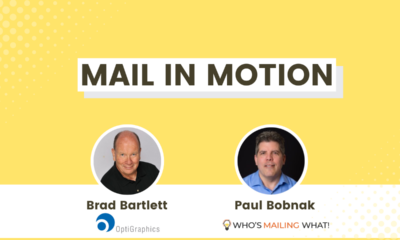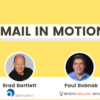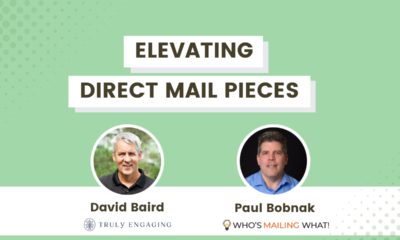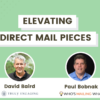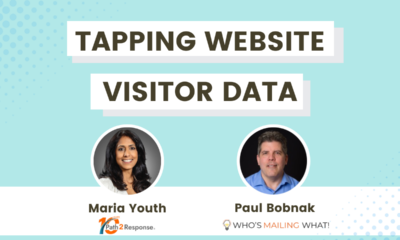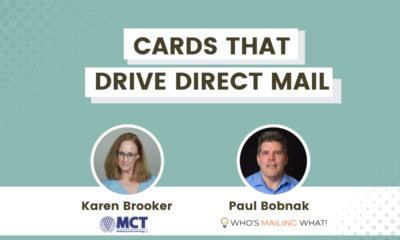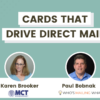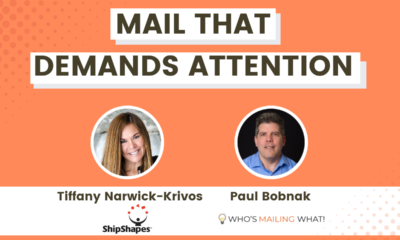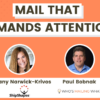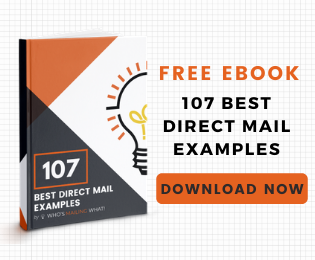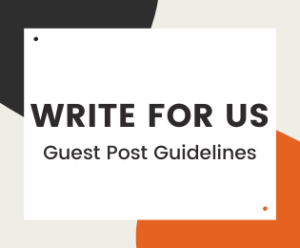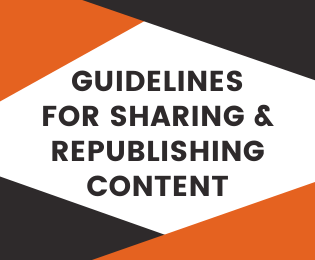MEET THE MAILERS
Meet the Mailers: Building Engagement With Shared Mail
In this episode, we talked with Mspark about the benefits of shared mail, new movers direct mail, and geomarketing to target prospects.
In this episode, I talked with Greg Bogich, CEO of Mspark, about the benefits of shared mail in driving customer engagement for marketers. Mspark offers integrated and highly targeted advertising solutions — both print and digital — to its clients.
Much of our discussion focused on shared mail, MSpark’s core service to its customers. He summarized the main benefits of shared mail for clients:
[W]e can get your reach. We can get it relatively inexpensive. We get engagement, … we’re going to reach prospects and drive your top line to a degree that I don’t think very other mediums are going to do.
 Greg BogichtCEO
Greg BogichtCEO
Mspark
He also wound his company’s solo mail solutions into the talk, such as life event marketing and retargeting mail.
Some of the other topics we covered:
- Greg’s background in direct mail and role as CEO
- How direct mail and digital work together
- Why new movers are so important
- Using geomarketing to target prospects
- Best value proposition for mail
Here are some questions and answers (edited for clarity and space):
- How does direct mail, especially when it’s integrated with digital, drive awareness and purchase intent for consumers?
That’s an interesting question because what we do is we use digital … to warm up the mailbox. I look at digital in a way that it is more of a brand awareness vehicle than print is. And certainly, in the shared mail environment, we are more bottom of the funnel, get somebody to take an action. So let’s use the digital advertising to generate awareness. And in some instances tell them to look inside their mailbox for the offer. So we use those two things in tandem. Now that said, we do have advertisers who use the mailbox as an awareness-driving vehicle. That would be the minority.
More often than not the mailbox is typically used in our campaigns to drive an action or some sort of purchase.
- [T]alking about shared mail and co-op mail. What kind of solutions does that provide to companies to at least sample direct mail? How does it benefit them?
I would tell you there’s probably three primary benefits.
One is reach. It allows you to reach both your existing customers and prospects who are interested in your brand. And that can be targeted to the geography around a store, it can be targeted to a specific consumer demographic [or] psychographic but at the neighborhood level.
I would also tell you that shared mail does it at a much lower cost than most other mediums. So the ability to get in the mailbox, the ability to get in there at a lower cost, and to hopefully build your database, so when you do want to use solo mail to keep those customers engaged and you’re doing less prospecting, it works really well.
The other part is engagement. You know, it’s funny, I used to sit on the board of what was called AAM and before that ABC (Audit Bureau of Circulations), and it was interesting because it was primarily newspapers and primarily magazines. And you got to see the circulation of the newspapers on a pretty precipitous, then steady decline on a year-over-year basis.
I used to get two newspapers; I don’t any longer. I used to get five magazines … I get one. People talk about the death of print and the challenges of print. But I still go to my mailbox every single day. And I still sort through my mail every single day. And it’s one of the very few mediums that regardless of what age cohort you’re in, whether you’re a millennial, whether you’re a Gen Z, whether you’re a Baby Boomer, you go to your mailbox on a day-to-day basis, you are looking at pieces and you are considering Yes/No.
And I would tell you no other medium does that. So getting them in the mailbox, we can get your reach. We can get it relatively inexpensive. We get engagement, whether it is solo or shared mail and candidly, with the shared mail, we’re going to reach prospects and drive your top line to a degree that I don’t think very other mediums are going to do.
- Why are new movers such great prospects for marketers?
There was a book written by a guy named Charles Duhigg, who I think was a New York Times writer and it was called The Power of Habit.
So reaching a consumer who’s just moved in, you know, I guess puts you in the right position to establish new habits with those consumers, right? I’m coming into a new home. I’m predisposed to make purchases. I got to furnish it. I got to figure out who’s going to cut the lawn. I have to figure out where I’m going to buy my groceries.
All of those things are, you know … typically a new mover makes somewhere in the neighborhood of 70 different brand decisions when they move in. And if you can reach that consumer early, they’re five times more likely to become lifetime customers.
So it could be the pizzeria that they go to first and becomes their favorite. If you can be the neighborhood restaurant, the grocery store, the person who does the gutters or mows a lawn, or any of those services, you’ve got a lifetime value on that consumer because of early adoption that probably exists until the next time they move.
And right now, the other thing that is worth noting is we have a pretty robust new movers program. There’s about 1.75 million people that move in this country every month. It’s a scalable audience too, from an advertiser’s perspective. So I think there’s a lot of reasons. But top among them is a new customer with a very high lifetime value if you do it right.
- How do you use geomarketing to target the right audience with shared mail? And do you use it in solo direct mail?
Yeah, so we certainly use it in the shared mail space to a greater degree than we do in the solo mail space. A lot of our customer set is brick and mortar, so when it comes to geotargeting, we either use their sales data to develop a footprint for their stores, or if they don’t have sales data, we can look at a radius and it’s interesting.
At the store operator level, they generally have a pretty good idea of where the consumers are coming from. So we can target down to the ZIP+4, and even in the shared mail environment to make sure that we are getting the absolute right households, that their budget allows in proximity to their store which is paramount.
Now since retail and restaurants are a huge portion of our business, geo-targeting still comes into effect when we are trying to find the right, you know, again, we do a lot of business with franchisees or authorized dealers, so we have to geotarget around their locations and make sure that not only the offer but the store map and anything that varies by location is correct.
So geotargeting becomes exceptionally important, even when we’re talking to an existing audience and existing customer, we still have to make sure we’re driving them to the right location.
- Talking about direct mail in general, what do you think is the best value proposition for direct mail? Why does it still work?
I think it’s what we talked about a little bit earlier. It’s the fact that the engagement level is high. It is a fact that virtually every household in this country has to look at, engage, and consider what they get in their mailbox. And if you can name another medium that does that, because television doesn’t, the internet doesn’t, most other mediums there are ways to technologically circumvent advertising.
And this is one where you not only don’t circumvent, you absolutely engage and [for] most people it’s wanted, most people want to see, it’s a little bit of a “Hey, what’s in my mailbox today” kind of a thing.
It doesn’t mean we don’t get stuff we don’t want, because we all do, but we all get stuff we want too … I don’t think you can say that about any other medium.
Here is our conversation. We’ve added timecodes for your convenience.
Thanks again, Greg, for an interesting and informative chat! To learn more about Mspark, visit Mspark.com.
Your comments and ideas are very important to us in making your Who’s Mailing What! experience even better for you. Through these engaging and informative talks, we hope you’ll take away practical tips, insights, and stories to inspire and build your own success.
If you have any feedback — or are interested in sharing your expertise and viewpoint with our wide and diverse audience on “Meet the Mailers” — please reach out to me. I’d love to hear from you!







